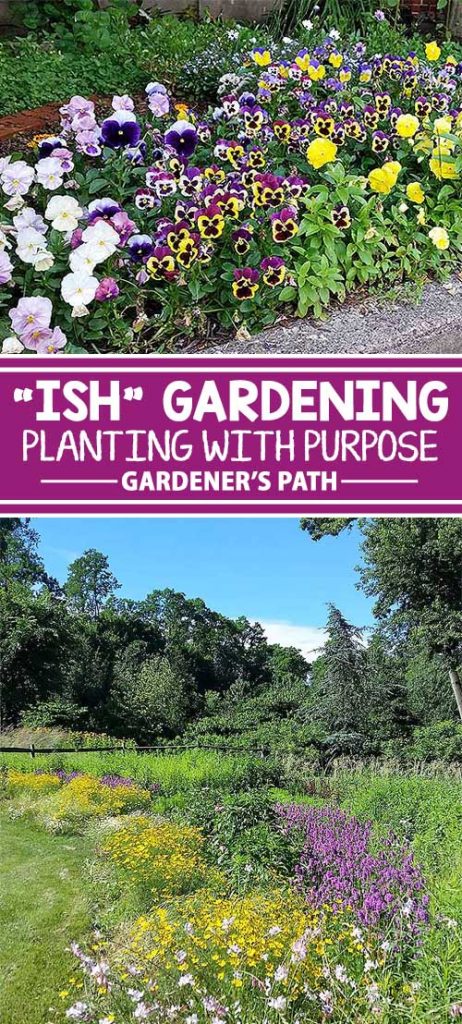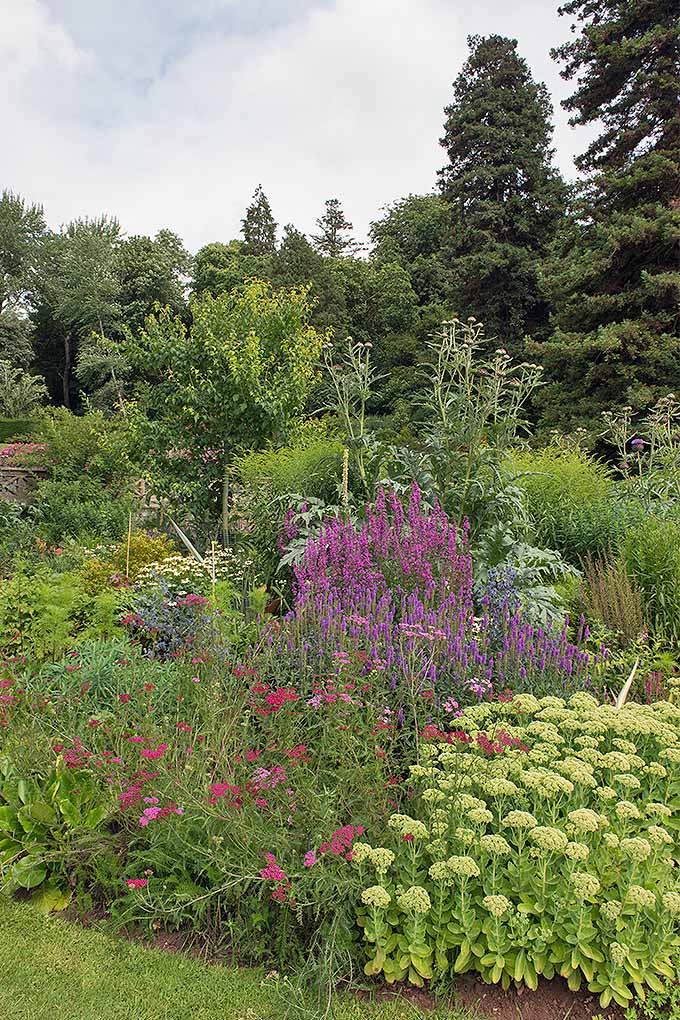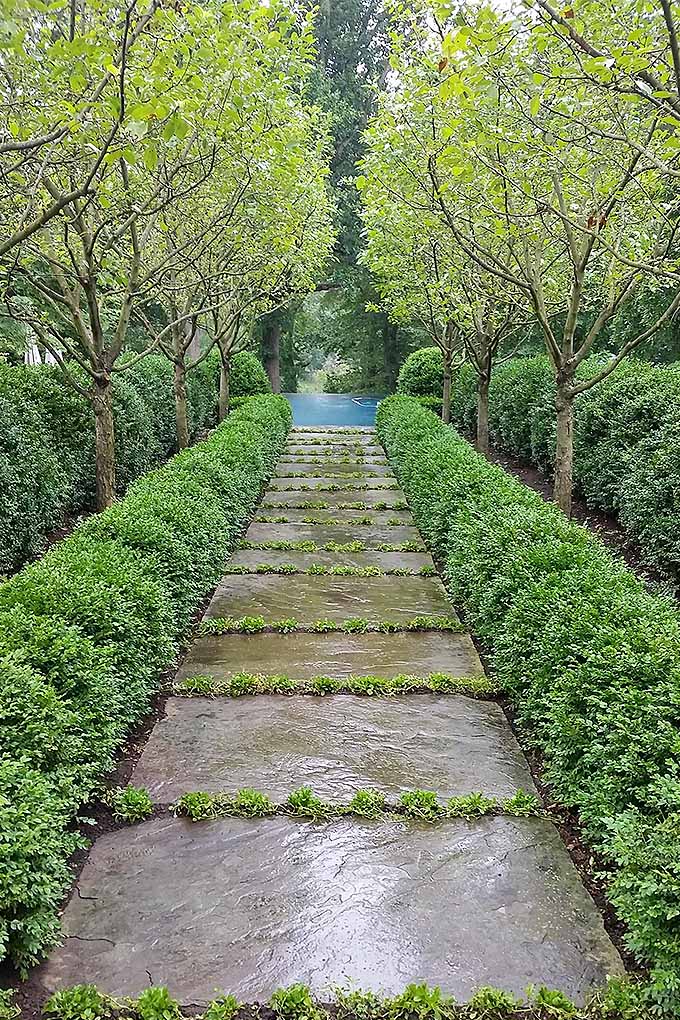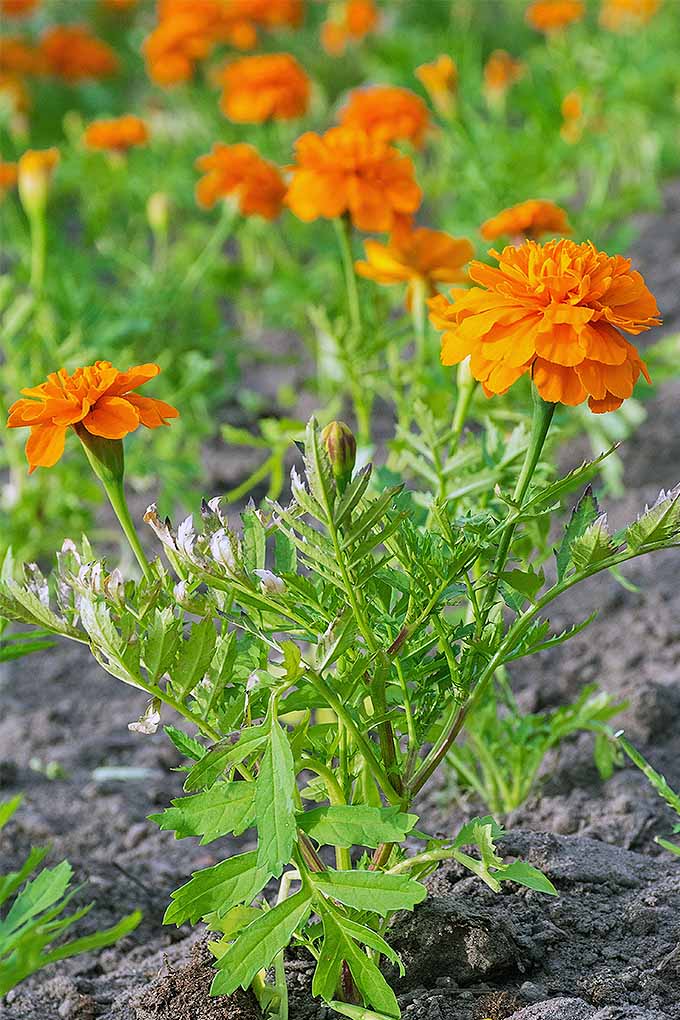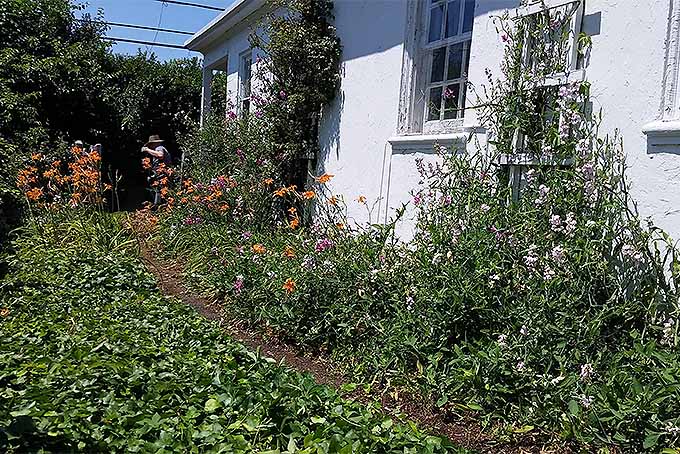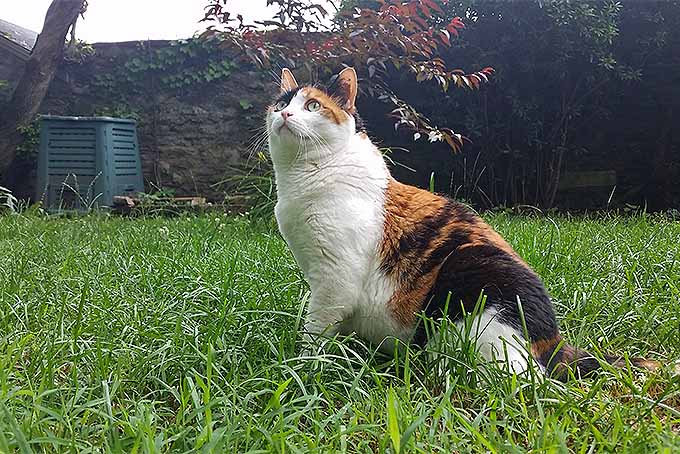I garden the way I cook, and there’s nothing else like it. Diving in with a loose idea of what to produce is what it’s all about. The majority of the plants are either throwaways from job sites or rescues from the clearance rack at the garden center. I try to work with a particular palette of color, but in the end I plant by intuition alone.
That’s what “Ish” gardening is all about. Learn the basics and the recipes for success, then dive into the project with ardent aspirations. By giving up some measure of control in the garden, we can catch a breath of relief, and enjoy our time there that much more. This isn’t going to be your usual how-to gardening post; there are other excellent articles here on Gardener’s Path that have that covered! Instead you’re going to read about one reason for the why of gardening. We’ll get there by taking a look at the core ideas of “Ish” gardening.
But First…
Before we jump into this, it’s a good idea to refresh your understanding of basic garden design. Some folks desire an outdoor space with clean, straight lines and meticulously pruned shrubs with tidy perennial arrangements. These are formal gardens. Formal gardens have a feel of purpose and design. The straight lines and symmetrical plantings themselves become focal points. Here, the land is transformed and restructured into a vision of idealized perfection. The plants here are immaculately pruned. Fine statuary and water fountains are commonly found in formal gardens, and well manicured walkways guide visitors on a tour through the space. On the other end of the scale are more naturalized designs; flowing and curved bed lines, a smattering of native wildflowers, and no small accumulation of a hodgepodge of garden statuary and decorations. This is called an informal garden. Informal gardens are less structured but have exciting highlights. The splash of yellow from a Carolina lupine acts as a highlight all by itself, and the smattering of garden features keep the eye watching for unexpected surprises. The natural terrain is used as an accompaniment to garden design. At the end of the day, the great majority of gardens fit into either the formal or the informal category. So where does “Ish” gardening fit in? It fits anywhere you want it to! The greatest quality of “Ish” gardening is that it isn’t beholden to any particular style because it’s all about feel.
Folksy Wisdom
Growing alliums to deter Japanese beetles and planting marigolds to scare off unwanted garden pests are examples of some good ol’ folksy wisdom. There’s no strong evidence that supports either of these tricks working; I have marigolds planted around all of my tomatoes but it didn’t stop an infestation of horn worms! But this approach to gardening is the direction we want to go in. That sounds counterintuitive, but it’s a concept at the heart of gardening. One of mankind’s oldest inventions is agriculture, and we only grew better at the activity by listening to the oral lessons of our ancestors.
A more pragmatic view on the value of folksy wisdom is that making mistakes makes you a better gardener. I’ve always said that the secret to a green thumb is staining it that color with a lot of dead plants. You could digest a hundred books on gardening and still watch that basil wither away. Folksy wisdom is like street smarts for gardeners. I’ve always said that the secret to a green thumb is staining it that color with a lot of dead plants. “Ish” gardening contains a library of wisdom unique to each gardener. That’s why you’re reading this article right now – because everybody has their own piece to the puzzle! Scan heavily through the information on Gardener’s Path for tips and tricks, and share it with your fellow gardeners.
Plant with Purpose
There is a scene from Bruce Lee’s Enter the Dragon, the greatest movie of all time, that truly applies to “Ish” gardening. In the scene, Bruce plays a monk who is teaching a novice how to properly throw a punch. But instead of showing the young student the physical technique behind a punch, Bruce tells the student to strike with “emotional content.” After the student fails and strikes with anger, he learns that he needs to practice his art with a degree of focus and intent. It isn’t enough to throw the punch; the student must feel the punch and understand why he’s doing it. In much the same, way the gardener should feel what they’re doing rather than merely going through the motions to achieve some stale goal. There are as many reasons to garden as there are gardeners, but there’s an underlying theme to it all. We love to garden. The specific aspects we care so much for aren’t important, but the practice itself is what drives us. “Ish” gardening has only one real requirement: that the gardener cares for what they are doing with unconditional love. Love for tomatoes with blossom end rot, love for sun-sick begonias, and love for every last slug crawling around out there. There’s no need to compose sonnets for your sunflowers. I mean, you could, but you don’t need to. Instead, consider your intent when gardening. I know that I’ve been prone to bouts of frustration when gardening. After I’m working in other people’s gardens for nine hours a day, sometimes the last place I want to be is on my knees weeding the ground cover in my own yard! So, instead of feeding into those frustrations, I step outside and kick off my shoes. Often I’ll take a slow walk around and greet the plants (more on that in the next section!), taking in all of the growing things surrounding me. After a few minutes walking around I can jump into weeding with no hesitation. My intent has shifted from getting through a chore to tending to my much-loved garden. Instead of vacantly powering through the task, I am instead cultivating gratitude. If we aren’t gardening for the love of it, then what are we there for? Next time you’re pruning or fertilizing, think about how you feel while doing it and decide if that’s the intent you want poured into your plants.
Respect the Plant
In the early part of summer I was tasked with regularly removing large quantities of poison ivy. My coworkers grew increasingly perplexed that I never developed the characteristic itchy rash that plagues poison ivy handlers. They asked how I avoided contact and I replied, “I made friends with the poison ivy.” Did it know what I was saying? Maybe, maybe not. But the conversation helped me to be more aware of what I was doing and encouraged me to respect the plant. The Book of Forest & Thicket: Trees, Shrubs, and Wildflowers of Eastern North America “Hey there, Poison Ivy,” I’d say. “You can grow just about anywhere you want, but you can’t grow here.” I removed it carefully, folding every vine and leaf into a small bundle before tossing it into a bucket to safely hold the stuff. And that’s the truth. I am aware that talking to plants marks me as a bit of a weirdo (at least to those who don’t garden…), but a little conversation helped me avoid contact with the leaves. “Ish” gardening encourages respecting the plants we work with. When there’s an awareness that everything in the garden is a living thing, and the garden itself is then a large living thing made up of many smaller ones, respect blossoms between garden and gardener. Our plants trust us to give them what they need, so in turn we should trust that a rose knows how to be a rose. The garden is its own habitat in your local ecosystem. Everything we do in the garden impacts everything that goes on outside of it.
The Garden and the Gardener
Everything in “Ish” gardening is pretty straightforward, and so is its intent: to blend garden and gardener into one. It’s a practice that encourages relaxation and hands-on learning, and most importantly, respecting the garden as the living thing that it is. “Ish” gardening encourages wildlife to come into the garden to help complete the mosaic. There’s no need to chase everything out of the garden, and living creatures are often invited into this green space. These gardens might not win awards, but they’re surely recognized as places that are affectionately tended to by their gardener. And for the gardeners themselves, it’s a welcoming place to become paired with. Photos by Matt Suwak, © Ask the Experts, LLC. ALL RIGHTS RESERVED. See our TOS for more details. Book cover image via Stackpole Books. Uncredited photos: Shutterstock.
